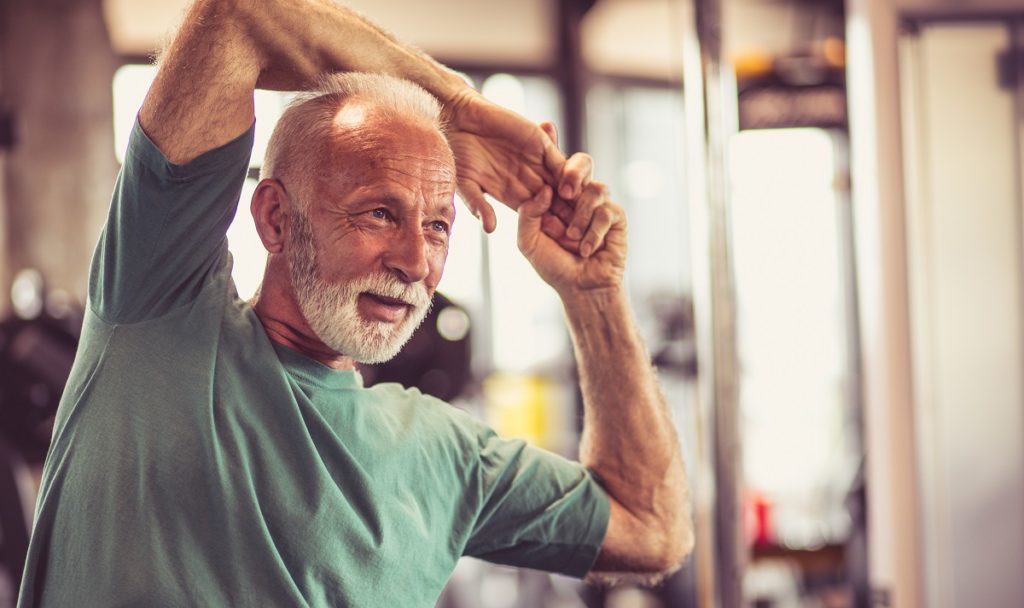By Stephen Dehn, MSPT, physical therapy

Most people don’t think about falling until it happens. But when it does, it can change your life in an instant. Besides bumps, bruises and broken bones, falls can cause lost income, lost mobility and lost independence. They are responsible for 95% of hip fractures. They are the leading cause of traumatic brain injuries. And in people over 65, falls are the No. 1 cause of injuries and injury-related deaths.
We encourage you to think about falling before it happens, so you can take steps to make sure it won’t.
Are you or a loved one at risk of a fall?
Anyone can take an unexpected tumble, but some people are at especially high risk of falling. If you or someone in your life fits into one or more of these groups, you should pay special attention to fall risks and take measures to reduce them:
- People over 65 – one out of four people over 65 takes a fall each year. Declines in health and physical condition, flexibility, activity, vision and balance all raise the risk as we get older.
- People who have fallen before – previous falls make you two to three times more likely to fall again due to the health declines that can follow.
- People with medical issues – heart conditions, stroke, seizures, arthritis, vision changes, loss of sensation in the feet (especially due to diabetes), Parkinson’s disease, vitamin deficiencies and other issues can make a person more likely to fall.
- People who use alcohol, drugs or certain medications – anything that causes drowsiness, dizziness or decreased alertness raises the risk of a fall.
Seven steps to fewer falls
While some risk factors can’t be changed, many can. Here are seven risk-reducing steps that can greatly lower your chances of a fall.
1. Build your strength and balance — tai chi, anyone?
At the heart of reducing falls is improving your physical condition, including core and leg strength, balance and coordination, and overall activity level. While there are many ways to do that (gym work, rehab programs, yoga), tai chi is one of the best, especially for older people. Its slow, fluid movements build strength, flexibility, balance and energy. Some studies suggest that a regular tai chi practice can reduce fall risks by as much as 50%. Many Medicare plans — including the popular Silver Sneakers program — cover tai chi classes, and the movements can be adapted for people with mobility issues.
2. Reduce alcohol or substance use.
Cutting back can have tremendous benefits, including a lower risk of falls.
3. Review your medications.
Go over all of your prescription and over-the-counter medications with your provider with an eye toward reducing interactions and minimizing effects on balance and alertness. Some providers also suggest vitamin D testing and supplementation, if needed, to improve bone, muscle and nerve health.
4. Get an eye exam.
Have your vision screened every year, and wear corrective lenses, if prescribed.
5. Pay attention to footwear.
Well-fitting shoes with good support are important both inside and outside the home. And watch those laces — or choose shoes without them.
6. Make sure your home doesn’t set you up for a fall.
- Keep walkways and stairs clear.
- Remove or secure throw rugs to prevent slipping and tripping.
- Put no-slip mats in your tubs and showers.
- Upgrade lighting to make sure you can see clearly, especially near steps and stairs.
- Consider installing grab bars in bathrooms and stabilizing railing on all stairways.
- Store needed items where you can get to them without climbing a stool.
7. Keep your provider informed.
If you do take a fall, be sure to let your health care provider know.
Bonus step: consider a fall risk assessment.
For people who’ve had a significant fall, feel unsteady on their feet, or are worried about falling due to age, disability or any other reason, a fall risk assessment can provide a starting point for positive changes.
During the assessment, our physical therapy team will talk with you about your history of falls, medical status, medications, living environment, and whether you use a cane, walker or other assistive devices. Then we’ll evaluate your strength, balance, coordination and gait. With this information, we can determine whether your fall risk is low, moderate or severe, and then create a targeted, evidence-based home exercise program to help you improve your specific areas of weakness.
Just as every risk can’t be eliminated, not every fall can be prevented — but many of them can. By taking preventive steps now, you can make sure that the odds fall in your favor.


